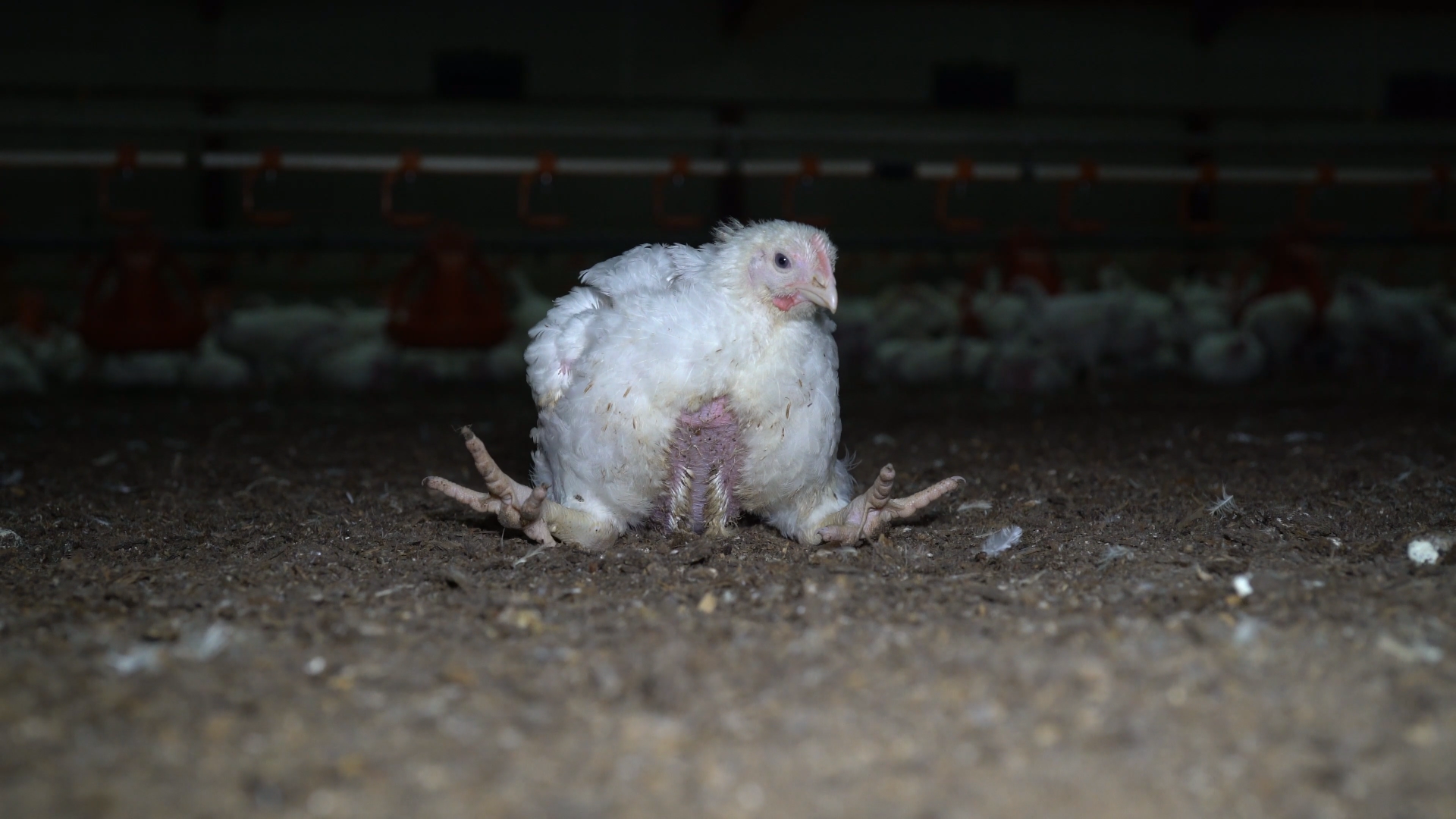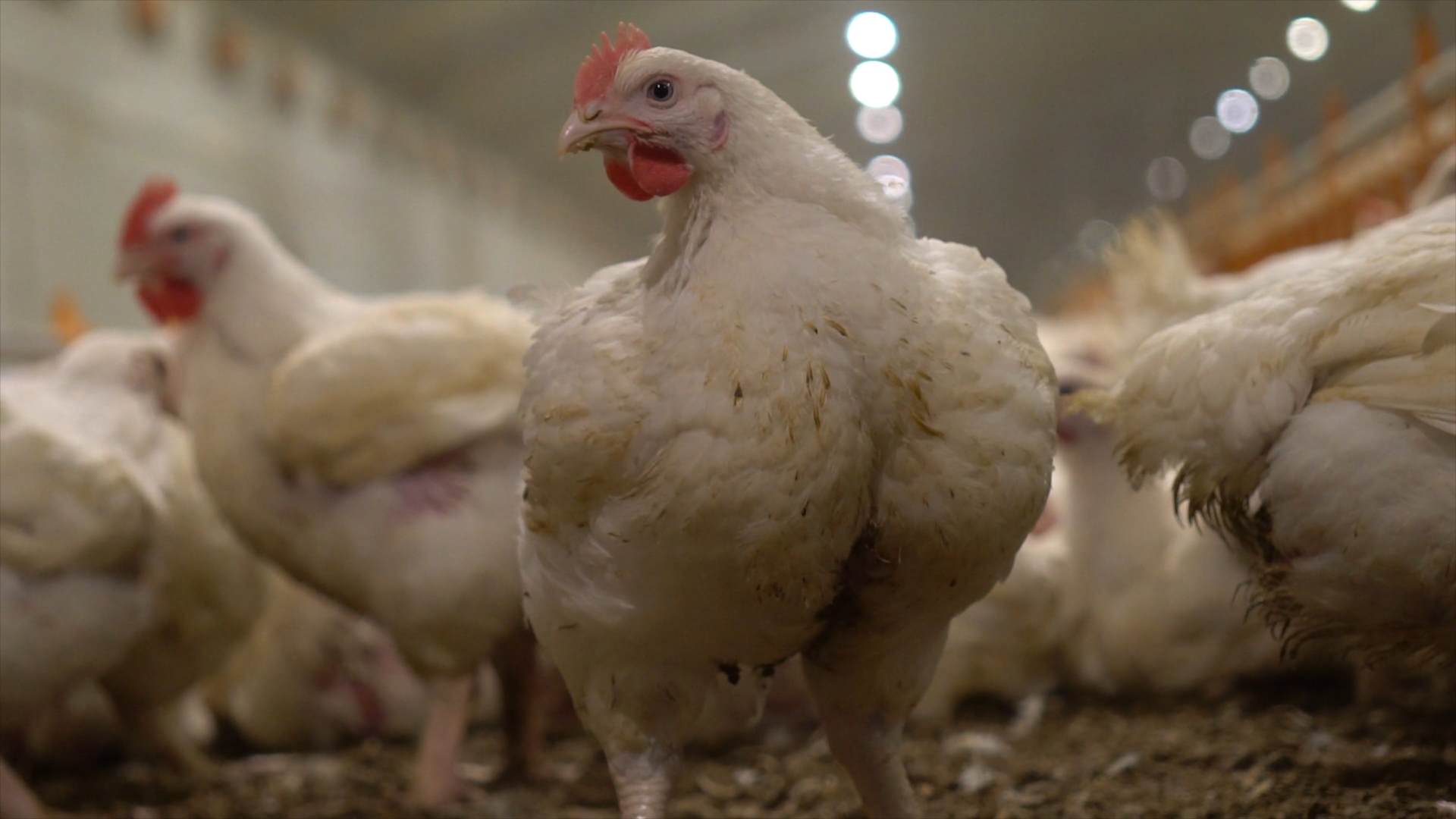A chicken can be just 5 weeks old when he is killed for his meat, but he’ll have the body of an adult bird and many of the ailments that come with it. This unnatural growth rate is the result of decades of selective breeding that has put industry profits ahead of the wellbeing of animals.
In commercial chicken farming, the chickens have just one ‘job’ — to gain weight. And everything — from the conditions they’re kept in, to selective breeding over generations — has been carefully manufactured to create a business model where chickens become as ‘meaty’ as possible, as quickly as possible.
The consequences of this rapid and unnatural growth are dire for many birds. As their bodies grow too quickly, walking and even standing can become difficult due to lameness or dislocated joints.
Modern chickens are effectively born into a genetic prison. Their bodies are their cages. Their health and welfare are so compromised that their likelihood of survival (or not) is built into the economics of running a chicken farm.
The industry anticipates that 4% — or 26 million chickens annually — won’t even survive long enough to reach slaughter weight.










